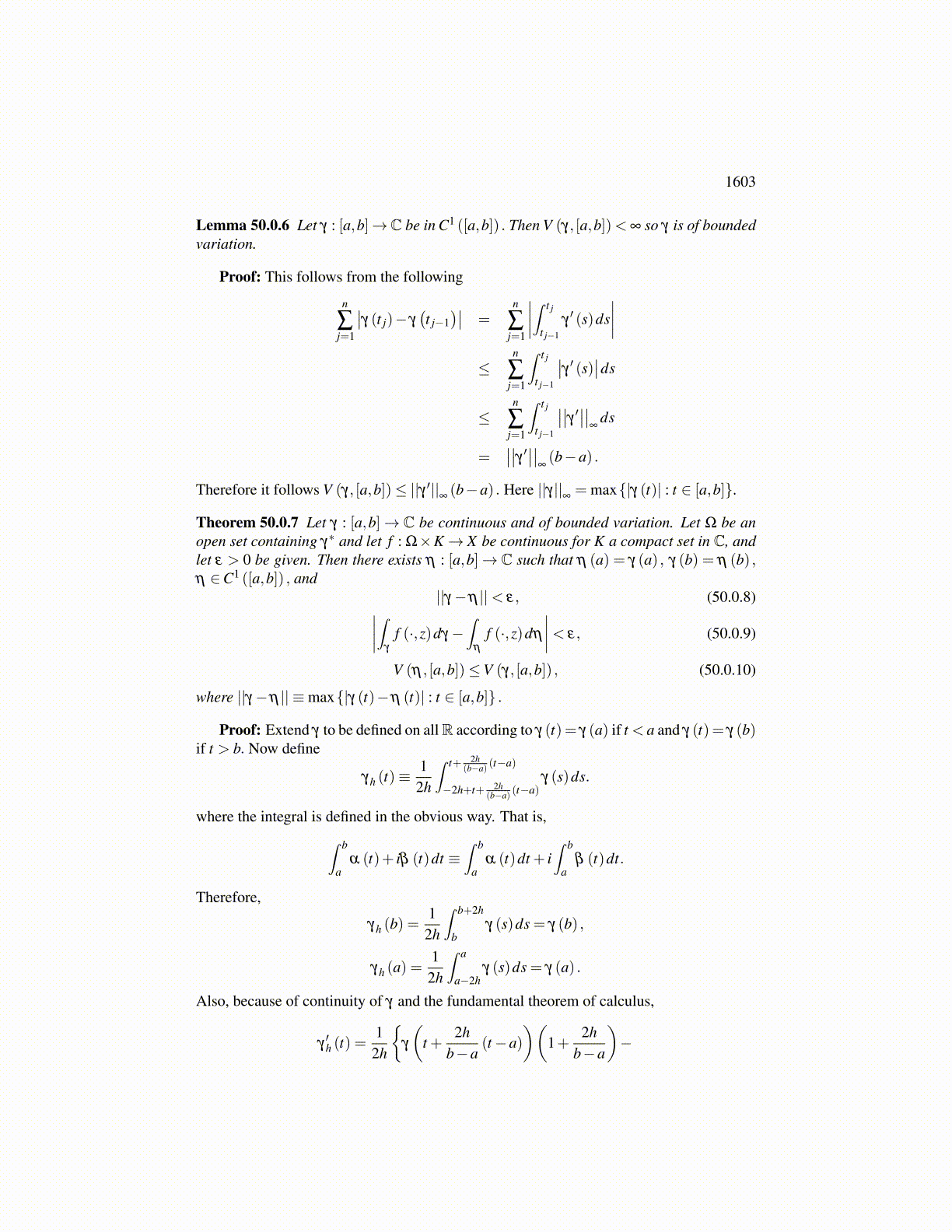
1603
Proof: The function, f ◦ γ , is uniformly continuous because it is defined on a compactset. Therefore, there exists a decreasing sequence of positive numbers, {δ m} such that if|s− t|< δ m, then
| f (γ (t))− f (γ (s))|< 1m.
LetFm ≡ {S (P) : ||P||< δ m}.
Thus Fm is a closed set. (The symbol, S (P) in the above definition, means to include allsums corresponding to P for any choice of τ j.) It is shown that
diam(Fm)≤2V (γ, [a,b])
m(50.0.2)
and then it will follow there exists a unique point, I ∈ ∩∞m=1Fm. This is because X is
complete. It will then follow I =∫
γf (t)dγ (t) . To verify 50.0.2, it suffices to verify that
whenever P and Q are partitions satisfying ||P||< δ m and ||Q||< δ m,
|S (P)−S (Q)| ≤ 2m
V (γ, [a,b]) . (50.0.3)
Suppose ||P|| < δ m and Q ⊇P . Then also ||Q|| < δ m. To begin with, suppose thatP ≡
{t0, · · · , tp, · · · , tn
}and Q ≡
{t0, · · · , tp−1, t∗, tp, · · · , tn
}. Thus Q contains only one
more point than P . Letting S (Q) and S (P) be Riemann Steiltjes sums,
S (Q)≡p−1
∑j=1
f (γ (σ j))(γ (t j)− γ
(t j−1
))+ f (γ (σ∗))(γ (t∗)− γ (tp−1))
+ f (γ (σ∗))(γ (tp)− γ (t∗))+n
∑j=p+1
f (γ (σ j))(γ (t j)− γ
(t j−1
)),
S (P)≡p−1
∑j=1
f (γ (τ j))(γ (t j)− γ
(t j−1
))+
= f(γ(τ p))(γ(tp)−γ(tp−1))︷ ︸︸ ︷f (γ (τ p))(γ (t∗)− γ (tp−1))+ f (γ (τ p))(γ (tp)− γ (t∗))
+n
∑j=p+1
f (γ (τ j))(γ (t j)− γ
(t j−1
)).
Therefore,
|S (P)−S (Q)| ≤p−1
∑j=1
1m
∣∣γ (t j)− γ(t j−1
)∣∣+ 1m
∣∣γ (t∗)− γ (tp−1)∣∣+
1m
∣∣γ (tp)− γ (t∗)∣∣+ n
∑j=p+1
1m
∣∣γ (t j)− γ(t j−1
)∣∣≤ 1m
V (γ, [a,b]) . (50.0.4)